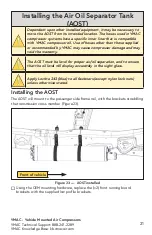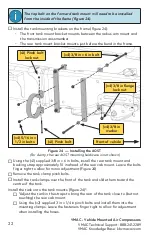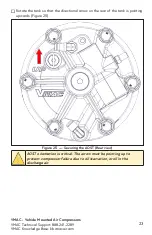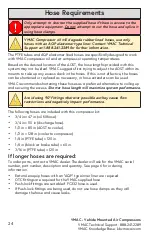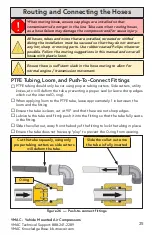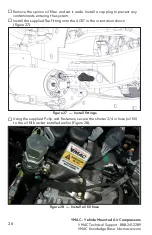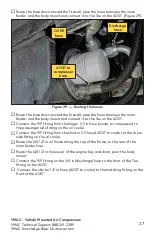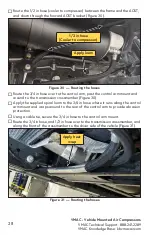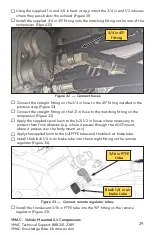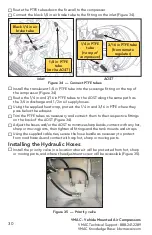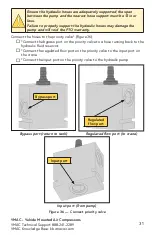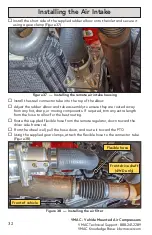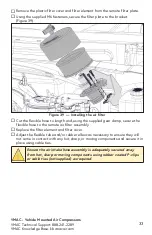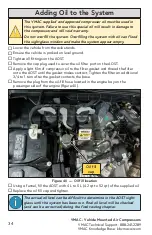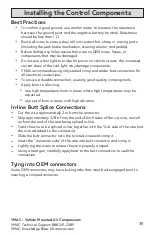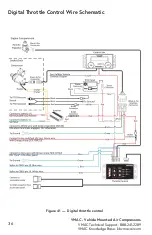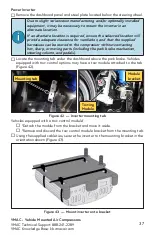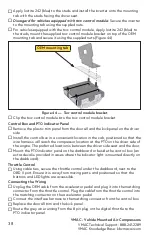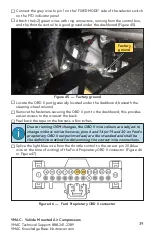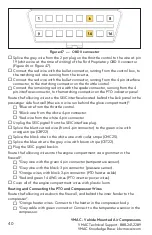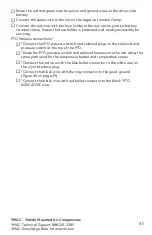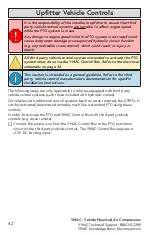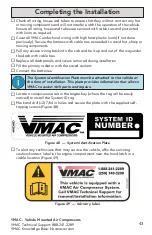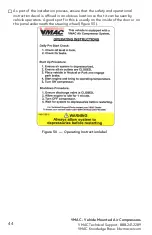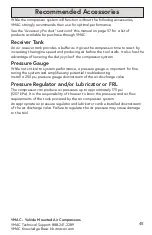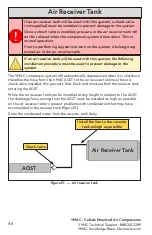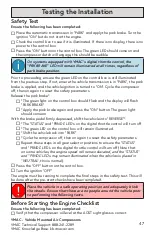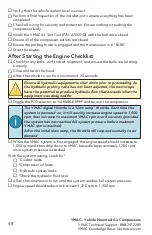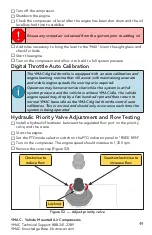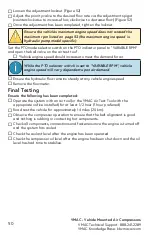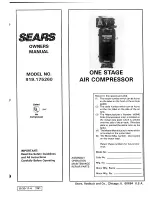
VMAC - Vehicle Mounted Air Compressors
VMAC Technical Support: 888-241-2289
VMAC Knowledge Base: kb.vmacair.com
35
Installing the Control Components
Best Practices
•
To confirm a good ground, use an ohm meter to measure the resistance
between the ground point and the negative battery terminal. Resistance
should be less than 1 Ω.
•
Route all wires to ensure they will not contact hot, sharp or moving parts
(including the park brake mechanism, steering column, and pedals).
•
Before drilling any holes ensure there are no OEM wires, hoses, or
components that may be damaged.
•
Do not use a test light to probe for power on vehicle circuits, the increased
current draw of the test light may damage components.
•
VMAC recommends using only sealed crimp and solder butt connectors for
all electrical connections.
•
To ensure a durable connection, use only good quality crimping tools.
•
Apply loom to all wiring:
Ǜ
Use high temperature loom in areas where high temperatures may be
expected.
Ǜ
Use spiral loom in areas with high vibration.
In-line Butt Splice Connections
•
Cut the wire approximately 2 in from the connector.
•
Strip approximately 3/8 in from the end of both sides of the cut wire, as well
as from the end of the wire being spliced in-line.
•
Twist the wire to be spliced in-line, together with the "live" side of the wire (not
the wire attached to the connector).
•
Slide the butt connector onto the twisted wires and crimp it.
•
Insert the "connector side" of the wire into butt connector and crimp it.
•
Lightly tug the wires to ensure they are properly crimped.
•
Using a heat gun, carefully apply heat to the butt connectors to seal the
connection.
Tying into OEM connectors
Some OEM connectors may have locking tabs that must be disengaged prior to
inserting a crimped connector

